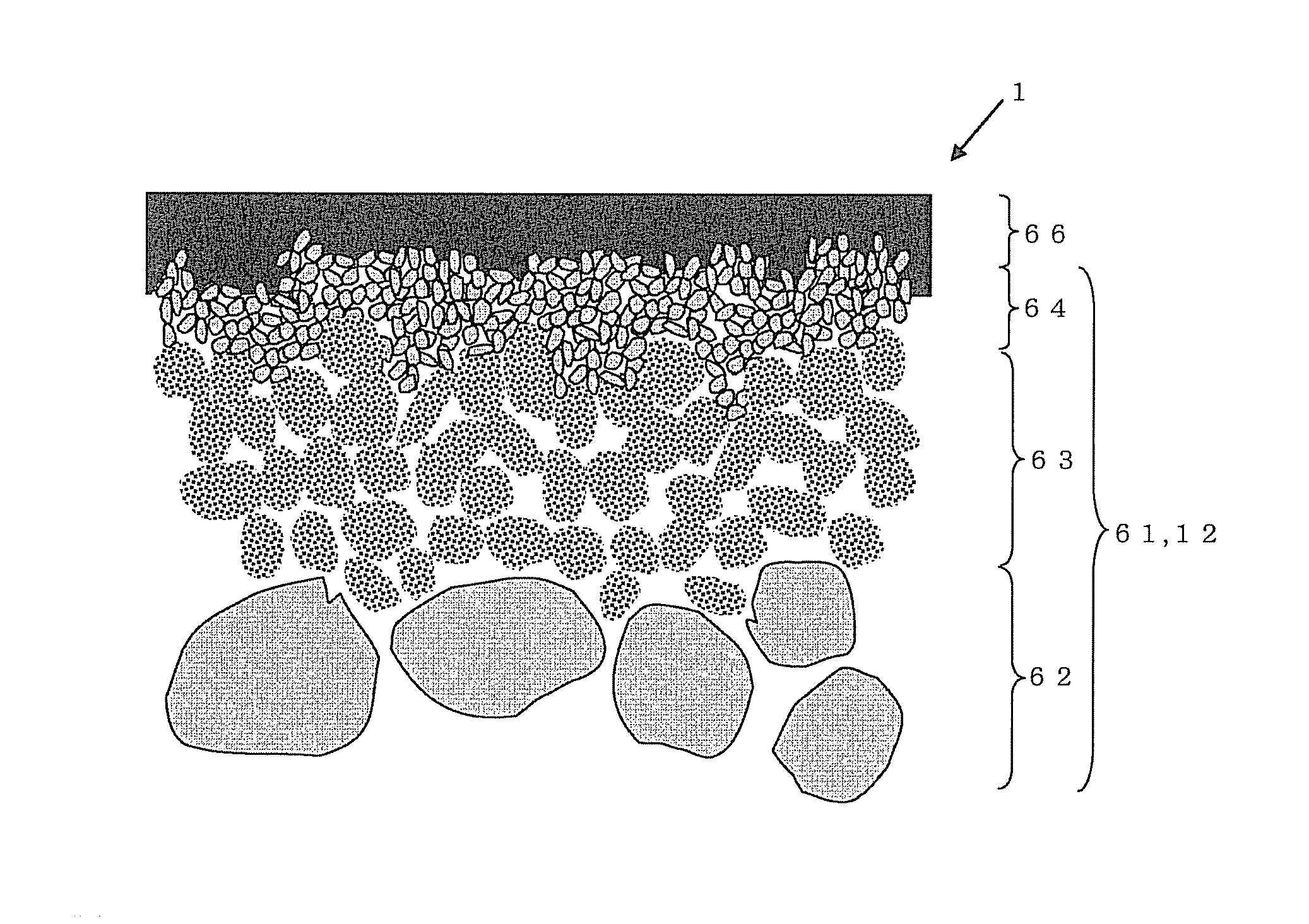Separation membrane complex, and method for manufacturing the separation membrane complex
a technology of separation membrane and complex, which is applied in the direction of membranes, separation processes, other chemical processes, etc., to achieve the effects of suppressing pressure loss, low total pressure loss, and high flux
- Summary
- Abstract
- Description
- Claims
- Application Information
AI Technical Summary
Benefits of technology
Problems solved by technology
Method used
Image
Examples
example 1
[0068]A monolith-shaped substrate having an average particle diameter of 10 to 100 μm and an average pore diameter of 1 to 30 μm was manufactured by means of forming by extrusion forming and firing. Next, the alumina particles (secondary particles) which is constituted of an aggregate having a primary particle diameter of 0.01 to 1 μm and which has an average particle diameter of 0.3 to 10 μm were deposited on the internal wall faces of the cells in the substrate obtained above by a filtration membrane-forming method with adjusting the membrane thickness by the membrane formation time, followed by firing to form an intermediate layer having a thickness of 10 μm and the average pore diameter of 0.1 to 3 μm. Then, on the intermediate layer, alumina particles having an average particle diameter of 0.03 to 1 μm were deposited by a filtration membrane-forming method with adjusting the membrane thickness by the membrane formation time, followed by firing to form a surface layer having a t...
example 2
[0071]A separation membrane complex was manufactured in the same manner as in Example 1 except that the thickness of the intermediate layer was made to be 100 μm and evaluated by the water-ethanol pervaporation separation method under the same conditions as in the Example 1. Table 1 shows the particle form (aggregate or dense body) of the intermediate layer, thickness of the intermediate layer, the pervaporation separation performance (separation coefficient, flux), and pressure loss. In addition, FIG. 4 shows a photograph of a cross section of the porous body after the carbon membrane was formed. In Example 2, two porous bodies were manufactured under the same conditions, and FIG. 4 is a photograph of a cross section of one of the porous bodies.
example 3
[0072]A separation membrane complex was manufactured in the same manner as in Example 1 except that alumina particles constituted of a dense body were used upon forming the intermediate layer and that the thickness of the intermediate layer was made to be 50 μm and evaluated by the water-ethanol pervaporation separation method under the same conditions as in the Example 1. Table 1 shows the particle form (aggregate or dense body) of the intermediate layer, thickness of the intermediate layer, the pervaporation separation performance (separation coefficient, flux), and pressure loss.
PUM
| Property | Measurement | Unit |
|---|---|---|
| thickness | aaaaa | aaaaa |
| porosity | aaaaa | aaaaa |
| pore diameter | aaaaa | aaaaa |
Abstract
Description
Claims
Application Information
 Login to View More
Login to View More - R&D
- Intellectual Property
- Life Sciences
- Materials
- Tech Scout
- Unparalleled Data Quality
- Higher Quality Content
- 60% Fewer Hallucinations
Browse by: Latest US Patents, China's latest patents, Technical Efficacy Thesaurus, Application Domain, Technology Topic, Popular Technical Reports.
© 2025 PatSnap. All rights reserved.Legal|Privacy policy|Modern Slavery Act Transparency Statement|Sitemap|About US| Contact US: help@patsnap.com



